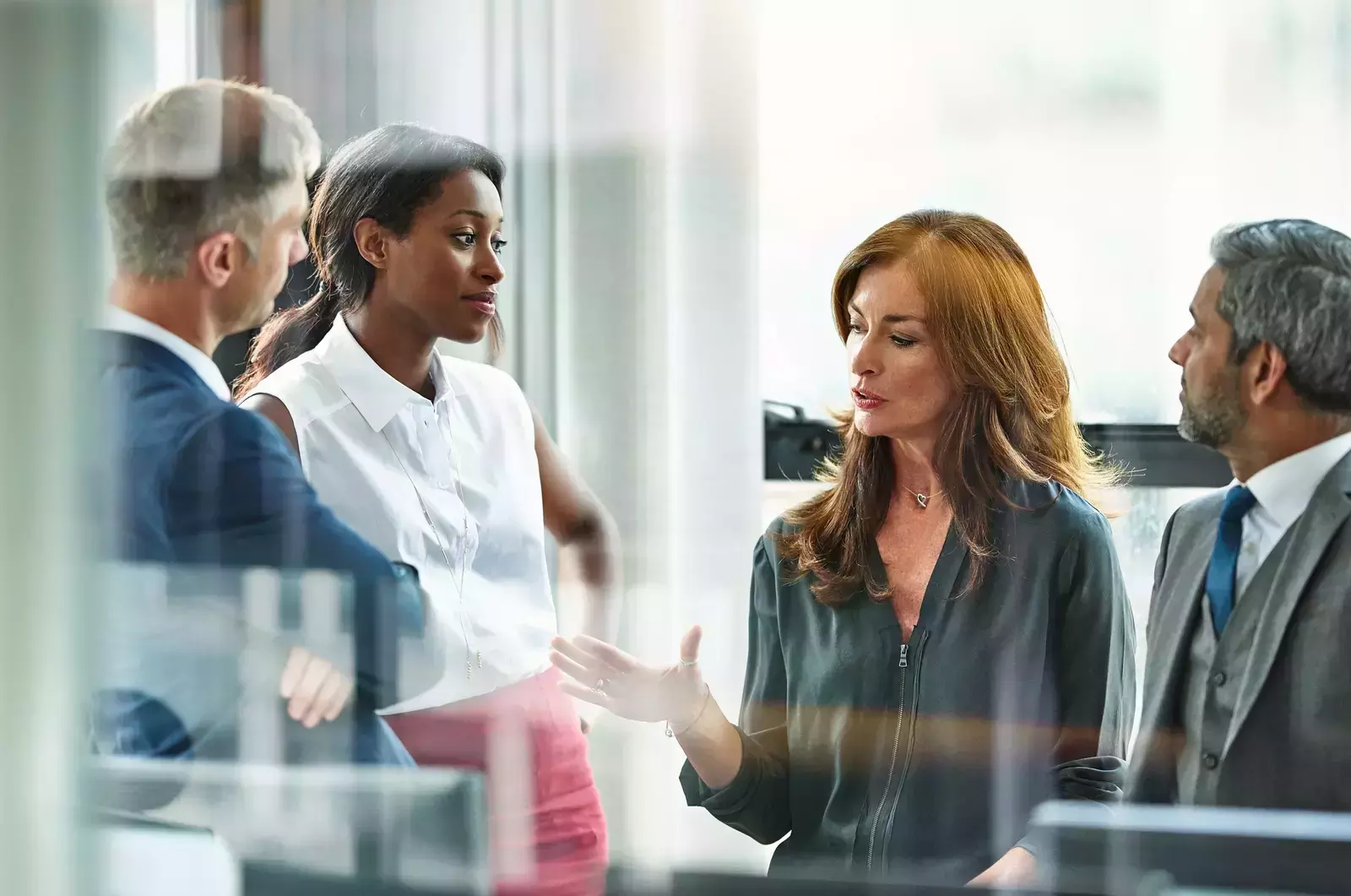Without a doubt, the world of work is changing, and we are continuing to see disproportionate disparities among various groups across the workforce. We can't discuss the impact of absence in the workplace as we've been doing in this series, or the answers we have to address it throughout the employee life cycle, without discussing the effect pay has on employee retention and engagement, especially if it's not equitably balanced.
The competitive labor market is further shaping these discussions around pay equity. Women, people of color, and other underrepresented groups are continuing to experience a significant persistent pay gap. As the world of work is continuing to change, pay equity is critical to any business imperative as it represents a $512 billion economic opportunity in the US. HR professionals and leaders play a critical role in helping to close the pay gap as it plays a significant role in the entire employee life cycle from recruitment, development, and retention of employees.

What we know about pay equity today
While focusing on wellbeing and flexibility is critical for combatting recruiting issues, absenteeism, and turnover in the workforce, the reality is that 46 percent of women are looking for higher salaries and one in three women of color plan to leave their job by 2022. Women in general are not only wanting flexible work environments, but also to be paid and promoted at levels that reflect their true worth. The gender pay gap discussion had already been happening prior to the pandemic, but since COVID-19 there have been some unhealthy trends emerging. In fact, it's now looking like the pandemic is projected to widen the employment gap between men and women even further than before.
Research continues to demonstrate that women continue to be paid less than men, which has significant impact on families and for mothers who may be the sole breadwinners and caretakers of their families. In 2020, women typically made 82 cents for every dollar of the average man. According to Pipeline Equity, the gender pay gap in the US widened by 5 percent in the first 11 months of the pandemic which wiped away 33 years of progress towards pay equity. Economist are projecting that it will take more than 10 years for the wage gap to return to what it was before the pandemic.
On top of this, a recent study by Deloitte shows that female employment has become smaller overall, largely because of job losses in low- and medium-wage occupations, while men employed in low- and medium-wage occupations suffered fewer job losses. This means that low-and middle-income occupations must recover among women, because the long-standing income disparity between men and women may widen even further. As far as education, women now exceed the number of men in the labor force with a bachelor’s degree, and they are still being paid less. This gap becomes wider the higher a woman’s level of educational achievement is, which is also true for people with disabilities whose earnings widen as their educational attainment increases.
The discussion on pay inequity has historically focused predominantly on white women, while other identities have been left out of the discussion. The pandemic has also further exacerbated systemic inequities for BIPOC (black, indigenous, people of color) in the United States. According to recent earnings study, Black workers in the US earned 74.9 percent as much as white workers in the second quarter of 2021 at the median, and Hispanic workers 72.8 percent during the same period.
When discussing intersectional identities, we also can't ignore intersectional gender equity, where even a greater pay gap exists. Women of Color (WOC) have especially been impacted in the workplace and continue to experience among the largest pay gaps in the workforce. Many of the in-person jobs that were lost at the beginning of the pandemic were also among the lowest paid, such as the service industry, retail, education, healthcare, and domestic work. Those exact same fields that we deemed essential impacted WOC significantly. For every dollar a White man made in 2021, Black women made 63 cents, Native American Women made 60 cents, and Latinas made 53 cents. Black and Latina women are also 2.5 times as likely as White men to make less than $15 hour. It is important to note that among the Asian American Pacific Islander (AAPI) community, pay equity discussions often only show big picture statistics that focus on ‘model minority’ discussions without considering the larger group as whole that has over 50 subgroups. While some APPI populations are concentrated in higher-wage professions, others are heavily concentrated in lower-wage occupations—one in four AAPI women work a front-line job.
Data collection for LGBTQ+ people, and particularly transgender people, is particularly vague in wage gap figures, and is something that must be captured to address pay equity. According to the Human Rights Campaign, 58 percent of transgender people of color reported that their work hours were reduced during the pandemic, which was the highest among the general LGBQT+ population who reported 23 percent and White LGBQT+ people reported 27 percent.
That's an overwhelming amount of information, right? But just think — armed with all of these trends, we can more effectively change the direction of this issue for the better to support our people equitably and foster a stronger sense of inclusion and belonging in our workplaces. Let's see how we can get started with that.
Advancing DEI&B and pay equity in your workplace
Now more than ever is the time for us as HR leaders to shape the conversations for equitable pay in the workplace. As we know from the trends we're seeing with absence, the Great Resignation, and recruiting, the stakes are higher than ever. If we want to attract and retain the best talent, we have to create the best outcomes possible for all the talent we have, regardless of who they are.
Data-driven conversations are especially important for understanding where specific inequalities exist. One of the first places to start is by performing a data analysis and pay audit in your HCM system to really understand the size of the pay gap and how it breaks down in promotions, attrition, performance, and job groups across intersections of gender, ethnicity, race, LGBQT+, and disability. Measuring diversity, equity, inclusion, and belonging (DEI&B) initiatives can tell you specific details into your pay equity plan as well. For example, looking at the success rates of who is getting promoted and whether underrepresented employees have equal access to mentorships, apprentice programs, training and development, high-visibility work, and special projects.
Greater transparency and published salary ranges can help with biases that may show up. Transparency is critical for any foundation of trust. Employers should be able to provide their employees more transparency around pay in each role, qualifications needed for particular roles, and paths for advancement in the company. Frequently, upper management and senior leadership have discussions around pay, but those findings are not shared with the larger workforce. Research continues to show that having evidence of pay equity becomes a motivating driver to close any gaps that may exist.
Discussing pay in the US is not common. Throughout my experiences, I've seen how discussing pay here can be a major taboo, while in other countries that I've worked and lived in there have been open discussions about pay even with senior executives. We need to encourage these discussions as HR professionals, and more importantly we must discuss the root cause of inequities that are embedded in biases, which come up during hiring practices, growth opportunities, compensation, promotions, and reviews. We have already seen certain states like Colorado put transparency laws in place that disclose targeted pay range for job postings. Other states and local governments have banned requesting salary history information. Consequently, it is critical to focus on the skills and experiences of the candidates and not focus on pay history. Discussions are also occurring on removing requirements on college degrees on job descriptions to get a broader selection of candidates, which you'll see more on as we continue this series.
When speaking about high turnover, absence, and disengagement in the workforce, we can’t avoid discussing wage compressions. This requires careful planning and the use of HR technology tools that can also help you with compensation management. During one of my experiences, I witnessed how hourly workers’ pay was raised and no careful analysis was considered to see how this change would affect salaried managers. We quickly saw a disengaged management team with high turnover rates, and some of the hourly workers who witnessed this impact quickly became uninterested in applying for management positions. A proactive approach to wage compression and pay inequity is critical not only for the morale of the workforce but for the employer brand.
Conclusion: Fair compensation is the path to future success
Now more than ever is the time to review compensation policies and practices in our organizations with a DEI&B lens, which is important in attracting and retaining engaged employees during this critical time of work. Building pay equity into organizational culture, like any other DEI&B strategy, requires commitment from leadership, and ongoing policies and practices embedded throughout the entire organization. We as HR leaders play a fundamental role in creating a workplace where DEI&B efforts can thrive, where underrepresented identities want to work at, and are given equitable access to opportunities and pay.
Of course, to have productive discussions with your leaders on these topics you need to present information in ways that resonate with them. If you need help getting these issues the visibility they deserve, I recommend you check out my colleague Julie Develin's recent webinar session on where to prioritize to move HR forward with your executive team.



